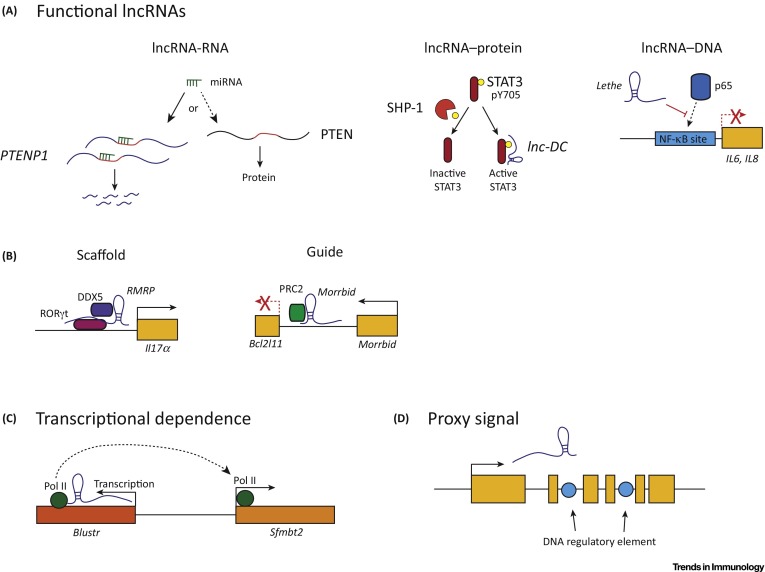当前位置:
X-MOL 学术
›
Trends Immunol.
›
论文详情
Our official English website, www.x-mol.net, welcomes your
feedback! (Note: you will need to create a separate account there.)
Control of Immune Cell Homeostasis and Function by lncRNAs
Trends in Immunology ( IF 13.1 ) Pub Date : 2017-09-15 00:00:00 , DOI: 10.1016/j.it.2017.08.009 Walter K. Mowel , Jonathan J. Kotzin , Sam J. McCright , Vanessa D. Neal , Jorge Henao-Mejia
Trends in Immunology ( IF 13.1 ) Pub Date : 2017-09-15 00:00:00 , DOI: 10.1016/j.it.2017.08.009 Walter K. Mowel , Jonathan J. Kotzin , Sam J. McCright , Vanessa D. Neal , Jorge Henao-Mejia

|
The immune system is composed of diverse cell types that coordinate responses to infection and maintain tissue homeostasis. In each of these cells, extracellular cues determine highly specific epigenetic landscapes and transcriptional profiles to promote immunity while maintaining homeostasis. New evidence indicates that long non-coding RNAs (lncRNAs) play crucial roles in epigenetic and transcriptional regulation in mammals. Thus, lncRNAs have emerged as key regulatory molecules of immune cell gene expression programs in response to microbial and tissue-derived cues. We review here how lncRNAs control the function and homeostasis of cell populations during immune responses, emphasizing the diverse molecular mechanisms by which lncRNAs tune highly contextualized transcriptional programs. In addition, we discuss the new challenges faced in interrogating lncRNA mechanisms and function in the immune system.
中文翻译:

lncRNA对免疫细胞稳态和功能的控制
免疫系统由多种细胞类型组成,这些细胞可协调对感染的反应并维持组织稳态。在这些细胞的每一个中,细胞外信号决定了高度特异性的表观遗传学景观和转录谱,以促进免疫力并保持体内平衡。新的证据表明,长的非编码RNA(lncRNA)在哺乳动物的表观遗传和转录调控中起着至关重要的作用。因此,响应微生物和组织来源的提示,lncRNAs已经成为免疫细胞基因表达程序的关键调节分子。我们在这里回顾了lncRNAs如何在免疫应答过程中控制细胞群的功能和体内稳态,强调了lncRNAs调节高度情境化的转录程序的多种分子机制。此外,
更新日期:2017-09-20
中文翻译:

lncRNA对免疫细胞稳态和功能的控制
免疫系统由多种细胞类型组成,这些细胞可协调对感染的反应并维持组织稳态。在这些细胞的每一个中,细胞外信号决定了高度特异性的表观遗传学景观和转录谱,以促进免疫力并保持体内平衡。新的证据表明,长的非编码RNA(lncRNA)在哺乳动物的表观遗传和转录调控中起着至关重要的作用。因此,响应微生物和组织来源的提示,lncRNAs已经成为免疫细胞基因表达程序的关键调节分子。我们在这里回顾了lncRNAs如何在免疫应答过程中控制细胞群的功能和体内稳态,强调了lncRNAs调节高度情境化的转录程序的多种分子机制。此外,











































 京公网安备 11010802027423号
京公网安备 11010802027423号